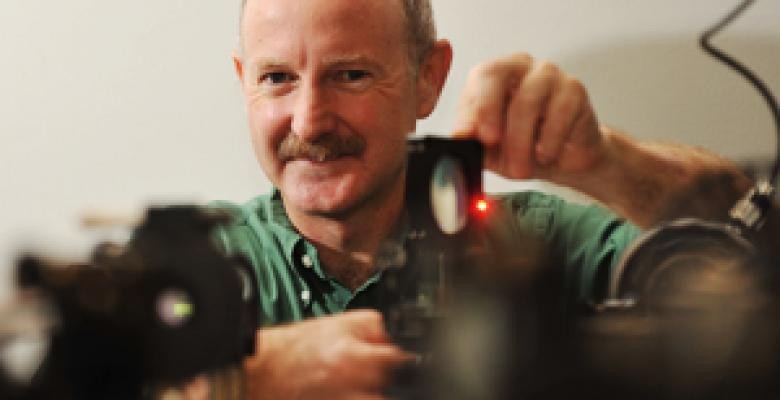Professor Rafael Yuste Tapped to Advise White House on Brain Study Initiative

The oldest known drawing of the nervous system is nearly a thousand years old, but scientists are still trying to understand how the human brain works. Its mix of functions—perception, memories, thoughts and consciousness—are generated by an intricate network of neurons whose connections or activities still have not been mapped.
That’s where Columbia’s Rafael Yuste comes in. A professor of biological sciences and neuroscience, he is a leader of the Brain Activity Map Project, a massive effort to create a dynamic map of the mind. Its aim is to reconstruct a full record of neural activity, which could unlock fundamental and pathological brain processes.
Together with other neuroscientists and a group of nanoscientists, Yuste has been tapped as an advisor for a far-reaching White House initiative to advance deeper understanding of the brain. The news broke in a front-page story in "The New York Times" story Feb. 17, which reported that the Obama administration was planning a decade-long scientific push to map the brain in much the same way the Human Genome Project unraveled genetics.
Further details are expected to be announced as part of the White House budget proposal in March, but President Barack Obama (CC’83) tipped his hand at the State of the Union address last month when he said “Today our scientists are mapping the human brain to unlock the answers” to brain-related diseases. Professor Yuste was featured in a follow-up New York Times story Feb. 26 describing the inception of the project.
Yuste was the lead author of an important paper in the June 2012 issue of "Neuron" outlining the Brain Activity Map, which is partly based on work he has carried out for the last 16 years at Columbia, where he is co-director of Columbia’s Kavli Institute for Brain Science. This initiative started at a 2011 neuroscience conference in England when Yuste proposed a massive, coordinated effort to develop technologies to track the brain’s activity and to “measure every spike from every neuron” in a neural circuit.
“One could say that the rest of the body is pretty well understood, but that once you go higher than the nose, we’re still in relatively uncharted territory,” says Yuste, whose lab is in the Northwest Corner building, and who is one of many Columbia faculty members working across disciplines to explore the mysteries of the brain. Indeed, his responsibilities at the Kavli Institute include promoting interactions between the basic science and neuroscience groups across Columbia’s campuses.
In the decades ahead, much of Columbia’s basic neuroscience will take place at the newly-endowed Mortimer B. Zuckerman Mind Brain Behavior Institute, which supports interdisciplinary neuroscience research across the University. It is headed by Prof. Thomas Jessell and Nobel laureates Eric Kandel and Richard Axel. It will be housed in the Jerome L. Greene Science Center, the first defining building of the University’s new Manhattanville campus. But it is important to note that just as pioneering biomedical and translational neuroscience will continue at Columbia University Medical Center, Yuste and others on the Faculty of Arts & Sciences and Engineering will continue to enhance such interdisciplinary research based on the Morningside Campus. Yuste's own lab, for example, is on the Sherman Fairchild Imaging Floor located in the new Northwest Corner Building, which was designed to be the base for a wide range of cross-disciplinary research involving both basic and applied science.
One aim of the Brain Activity Map is to develop highly sophisticated imaging techniques to help scientists gain an up-close view of the brain’s millions of neurons working together. The result is comparable to a high-resolution video of the brain in action, at the neuron level.
“This is a beautiful country, where an idea can make it from a brainstorming meeting to the State of The Union address in a year,” says Yuste, a native of Madrid.
“Columbia is poised to play a major role in the Brain Activity Map, because of its strengths in neuroscience, nanoscience and optical imaging.”